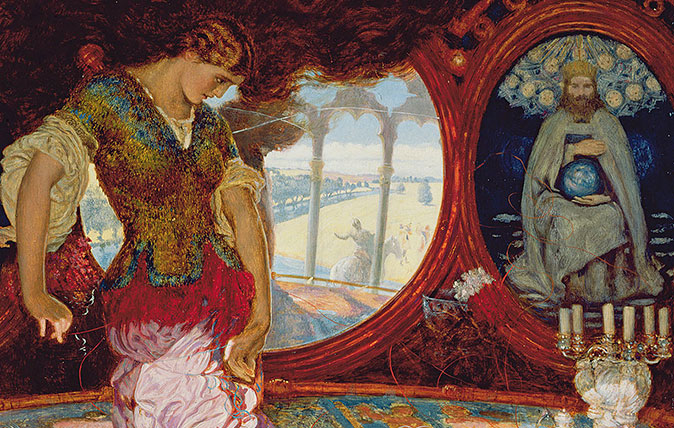Winifred Nicholson's work was one of the key inspirations for Jim Ede, who set up the Kettle's Yard gallery in Cambridge over 60 years ago. Chloe-Jane Good takes an in-depth look at one of her key works.

Winifred Nicholson, Cyclamen and Primula, 1923. Oil on board, 50 x 50 cm. Image courtesy of Kettle’s Yard, University of Cambridge
In 1957 Jim Ede lovingly and modestly restored the dilapidated group of buildings known as Kettle’s Yard and over time he grew his collection of art and found objects. The house and its contents are deeply personal, so it is easy to forget that it was always Ede’s intention to give them away. But even during the 15 years that he and his wife Helen lived there they kept ‘open house’ every afternoon of term so that students of Cambridge University in particular could find ‘order and peace’ free from the austere conventions of museums and art galleries.
Ede devoted Kettle’s Yard to simplicity of form, iterations in nature, the handmade and to space, quiet and light. He positioned paintings, drawings, prints, sculptures and pottery alongside traditional furniture and homely and natural objects including functional jugs and shells. Artworks and things converse in an intimate domestic setting filled with inventive living spaces and natural light.
Groupings of small pebbles sit carefully in corners of ledges or are given prominence on tabletops and cabinet displays. There are many pieces in the collection but the generous and thoughtful space given to each one tells us that the curator’s process was a highly selective one.
It was Winifred Nicholson and her husband Ben who first inspired Ede’s collection. He said she taught him ‘much about the fusing of art and daily living’. Nicholson’s Cyclamen and Primula (1923) is a colourist’s study of light and lightness but the interior versus exterior setting is curious, especially as it resonates with Ede’s mission to hand over his home and collection for public view.
Cyclamen and Primula was painted at Villa Capriccio in Lugano, Switzerland, where the Nicholsons lived during the early 1920s. It is set on an interior window ledge and an Alpine view rises behind. The two flowering plants are still in tissue wrapping from the market. Light and colour are at play and alive.
The peaks of the tissue mimic those of the featureless mountains behind. It is as though in places they are slotted in and a part of the same mountainscape, but Nicholson’s use of colour and volumes means this is a post-Cubist painting.
The warm sunlight is caught and radiates in and around the paper, part opaque and part transparent. The sunlight is so vivid you can feel it on your face and hear the air but strangely there is a barrier to the outside. The window is large but there is no sign of an opening and a strong black line crossing the canvas like a horizon seals the window to the sill.
The painter sits in a quiet personal place to make her subject while being exposed to the panoramic view, just as Kettle’s Yard is an intimate domestic place intended for the outside world.

In Focus: An idyllic sunny afternoon, evoked by a leading light of the School of London
Lilias Wigan takes an in-depth look at Leon Kossoff's Children's Swimming Pool, Autumn Afternoon, one of the pictures on show

In Focus: The Van Dyck portrait that shows Charles I as monarch, connoisseur and proud father
Lilias Wigan takes a detailed look at Van Dyck's Greate Peece, one of the highlights of the Royal Academy's stunning

In Focus: How Holman Hunt’s Lady of Shallot was inspired by Van Eyck’s greatest masterpiece
Holman Hunt was one of several pre-Raphaelites inspired by Jan Van Eyck's iconic The Arnolfini Portrait. Lilias Wigan takes an

In Focus: Cézanne’s brutally honest portrait of his wife, ‘weary and dissatisfied’, as their relationship was on the rocks
The National Portrait Gallery's exhibition of portraits by Paul Cézanne comes to an end this weekend. Lilias Wigan takes an




